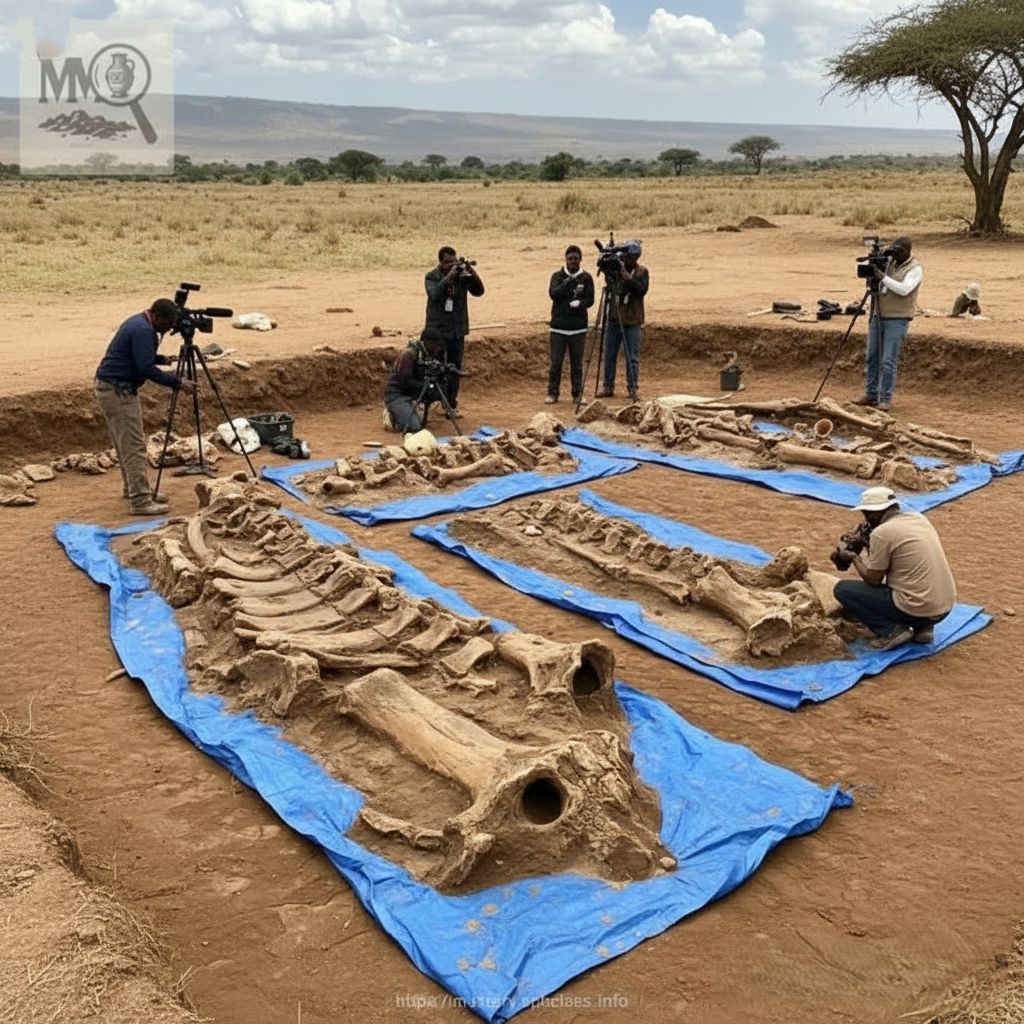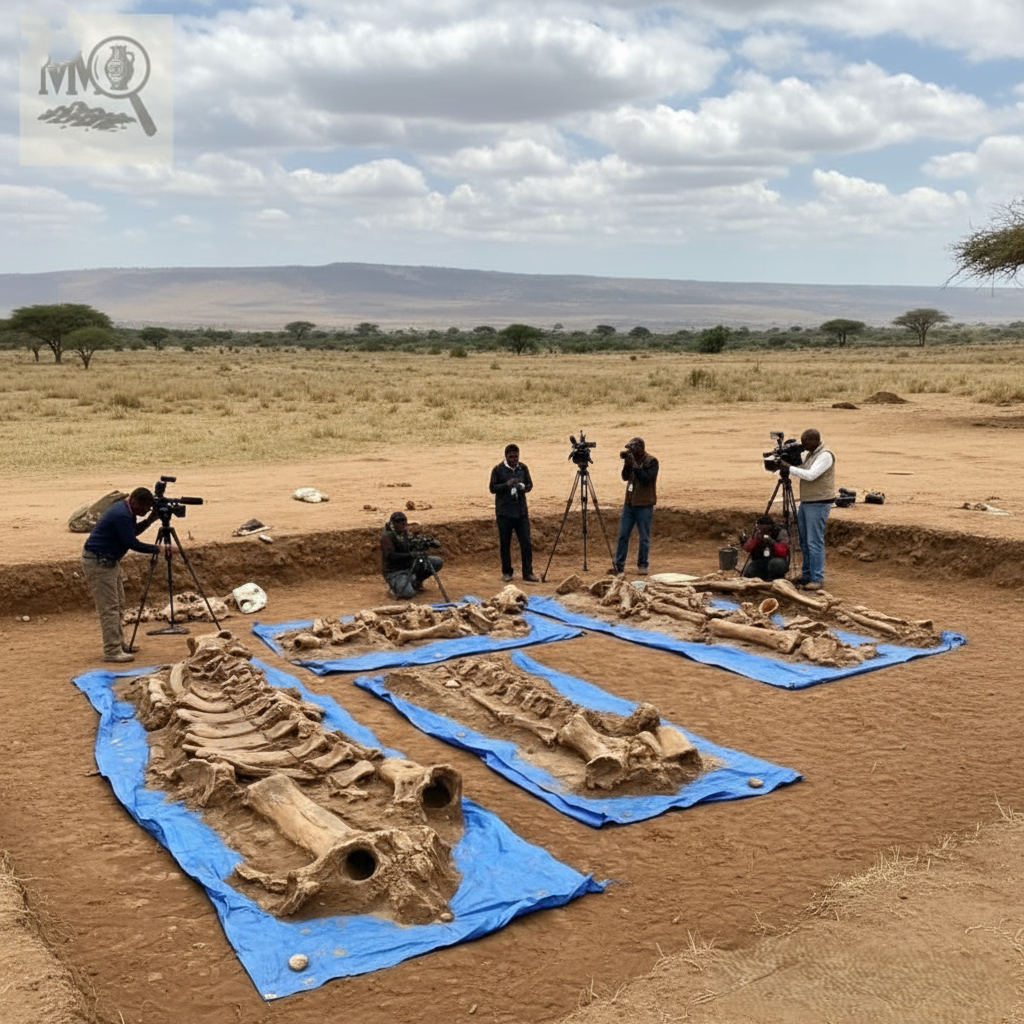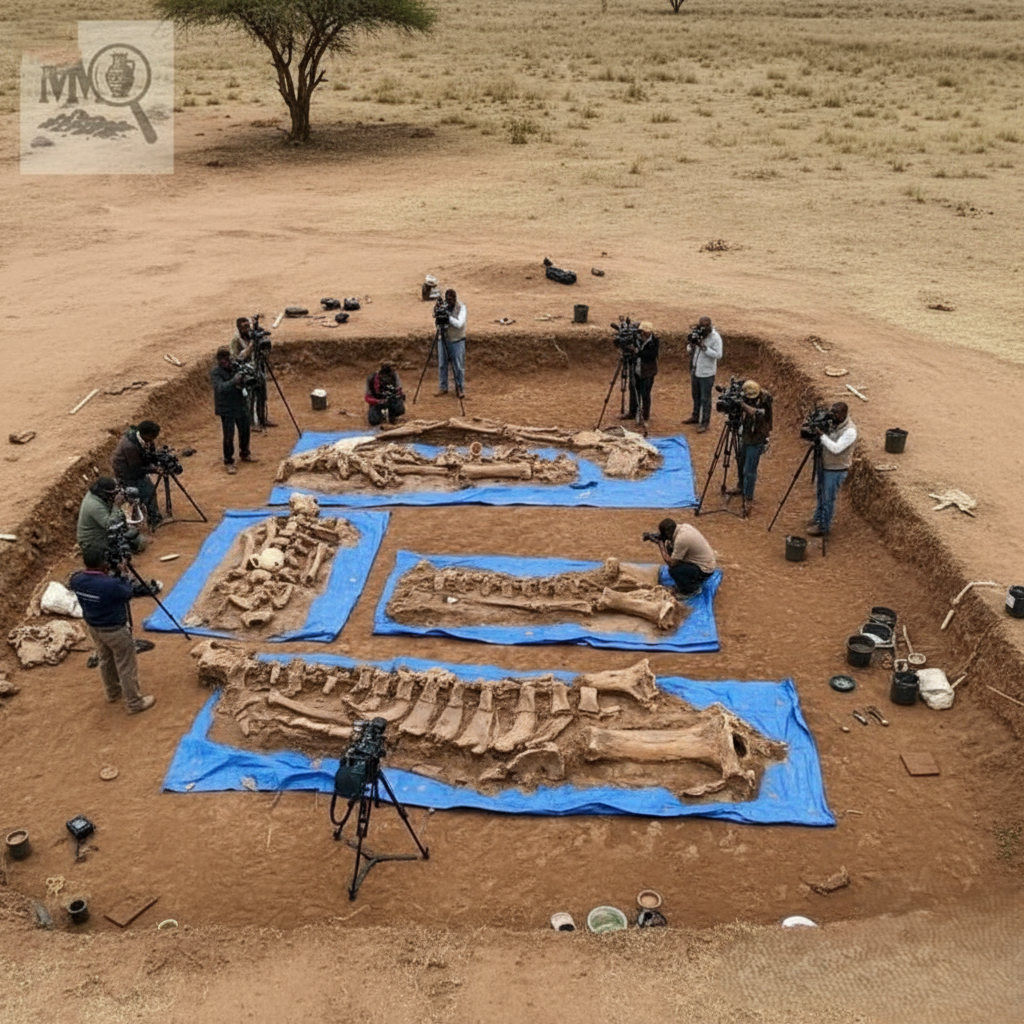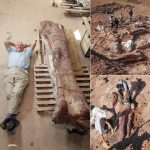Massive Skeletons Unearthed in African Excavation Ignite Global Scientific Firestorm

Massive Skeletons Unearthed in African Excavation Ignite Global Scientific Firestorm
An extraordinary discovery in the heart of Africa has sent shockwaves through both the scientific and historical communities. Teams of archaeologists conducting what was intended to be a routine excavation have uncovered multiple colossal skeletal remains sprawled across tarps under the scorching sun—bones that dwarf those of any known species on Earth. Photographs circulating briefly online before being removed show femurs longer than the average human body and skulls with human-like proportions, yet immense in scale. The revelation has ignited fierce international debate: could this be evidence of a long-lost race of giants once walking the African continent?
Official statements from regional authorities have described the find as “prehistoric megafauna,” likening the remains to extinct mammoths or giant apes. However, leaked internal reports and testimonies from anonymous team members tell a different story. According to these accounts, the skeletal structure bears an uncanny resemblance to human anatomy—complete with articulated joints, symmetrical skulls, and rib cages aligned in distinctly humanoid patterns. “This is not an animal. The bone density, the joint design—these are adapted for bipedal movement,” one source allegedly remarked. “But their scale defies everything we know about human evolution.”

As word spread, the excavation site was swiftly placed under tight control. Military vehicles and government representatives arrived within hours, sealing off the perimeter and restricting all external access. Researchers on-site have since been ordered to cease communication with outside media. Attempts by journalists to visit the area have been blocked, and aerial footage from drones has been mysteriously scrubbed from online platforms. The abrupt censorship has only fueled suspicion that the discovery may be far more significant—and far more disruptive—than authorities are willing to admit.
Historians have drawn immediate parallels to ancient African oral traditions and mythologies that speak of giant ancestral beings—powerful “sky-born” rulers or demi-gods said to have shaped the land long before modern humans appeared. Across multiple cultures—from Dogon legends in Mali to Zulu myths of titanic forefathers—there are recurring references to beings of extraordinary size and wisdom. Could these newly unearthed skeletons be the first physical confirmation of those long-dismissed tales?

The scientific community remains deeply divided. Some paleontologists argue that the remains could be misidentified composite fossils—a blend of different large species alt
ered by natural forces. Others insist that no known erosion or fossilization process could produce such distinctly human-like proportions at that magnitude. Independent laboratories have reportedly requested bone samples for radiocarbon dating and isotopic analysis, though it is unclear whether the military will allow such studies to proceed.

Meanwhile, social media platforms have exploded with theories and eyewitness claims. Viral hashtags such as #AncientGiants, #HistoryRevealed, and #HiddenTruths dominate global conversation. Leaked images—though heavily pixelated—continue to resurface, showing excavation tents surrounded by scientists in hazmat suits examining skeletal fragments under floodlights. The question consuming public discourse is no longer if these remains are real, but why the truth about them appears so tightly controlled.
If confirmed, this discovery could stand among the greatest in modern history—reshaping not only our understanding of early humanity but also the blurred boundary between myth and fact. Were these “giants” a forgotten species of advanced hominid? Survivors of a lost civilization wiped out by cataclysm? Or remnants of a chapter of Earth’s story deliberately buried by time—and perhaps by human hands?











